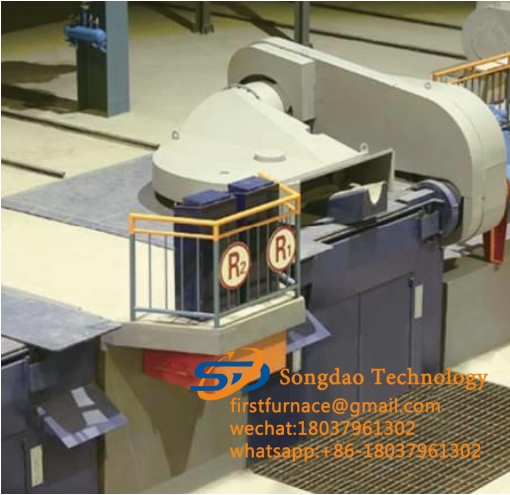- 27
- Sep
Installation and debugging of hydraulic system of metal melting furnace
Installation and debugging of hydraulic system of metal smelteovne
Den hydrauliske drivanordning har fordelene ved lille størrelse, fleksibilitet, lethed og bekvem kontrol og betjening. De fleste digel- og rilleinduktionsovne bruger hydrauliske vippesystemer. Udformningen af oliepumpestationen bør overveje pålidelig brug og bekvem vedligeholdelse. Der er smeltesektioner med flere metalsmelteovne, og hver ovns hydrauliske systemer skal kunne låne hinanden for at reducere tiden for tvungen nedlukning på grund af vedligeholdelse af det hydrauliske system.
The oil pump station is generally installed on a base with a certain height, which is convenient for draining oil from the oil tank during maintenance, and at the same time, it is beneficial to safe production. Even if a serious furnace leakage accident occurs, the oil tank can be protected from molten iron. When installing oil pipelines, we must also proceed from the worst conditions: avoid encountering high-temperature iron liquid at any time to prevent the expansion of accidents.
Eliminating the oil leakage in the hydraulic system is a relatively difficult task. This starts with improving the installation quality. The joints of the oil pipeline that do not need to be disassembled should preferably be connected by welding. The weld should be dense and free of leakage. After welding, clean the inner wall without leaving welding slag and oxide scale. For oil pipeline joints with threaded connections, sealing and leak-proofing should be considered in the structure. Take corresponding auxiliary measures during installation, such as adding anti-leakage paint, to reduce the possibility of oil leakage during operation.
Efter at det hydrauliske system er installeret, skal tryktesten af hele systemet udføres. Metoden er at passere 1.5 gange oliens arbejdstryk, holde det i 15 minutter, omhyggeligt kontrollere hver samling, svejsning og samlingen af hver komponent, hvis der er nogen lækage, skal der træffes foranstaltninger for at eliminere en efter en.
After the furnace body, water cooling system, and hydraulic system are installed, the furnace body tilting test should be carried out, and the overall inspection of the furnace installation quality, such as whether the hydraulic control system is flexible and reliable, whether each action is correct; whether the furnace body and furnace cover are operating normally ; When the furnace body is tilted to 95 degrees, whether the limit switch plays an insurance role, and adjusts the pressure and flow of the hydraulic system to make it in a good working condition. While tilting the furnace, check the installation quality of the moving joints of the water-cooling system. No water leaks or hinder the tilting of the furnace body; check the hoses of the hydraulic and water-cooling system, observe whether the length is appropriate when the furnace body is tilted, and make appropriate adjustments if necessary. Adjust; check whether the drainage system can work normally when the furnace body is tilted. If any deficiencies are found, corresponding measures should be taken.

